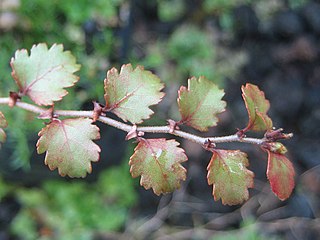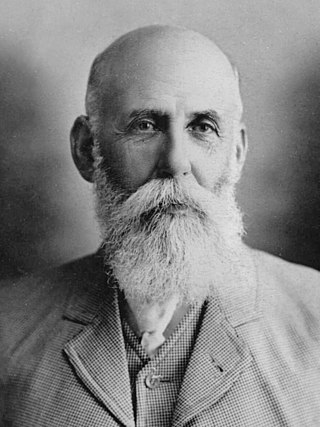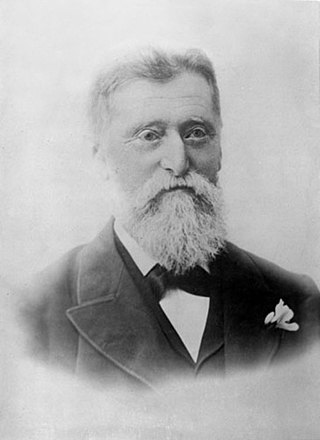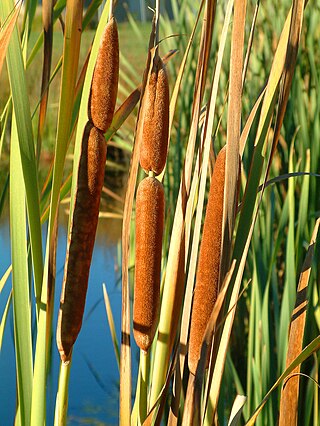
The Auckland Islands are an archipelago of New Zealand, lying 465 kilometres (290 mi) south of the South Island. The main Auckland Island, occupying 510 km2 (200 sq mi), is surrounded by smaller Adams Island, Enderby Island, Disappointment Island, Ewing Island, Rose Island, Dundas Island, and Green Island, with a combined area of 626 km2 (240 sq mi). The islands have no permanent human inhabitants.

The Australasian realm is a biogeographic realm that is coincident with, but not the same as, the geographical region of Australasia. The realm includes Australia, the island of New Guinea, and the eastern part of the Indonesian archipelago, including the island of Sulawesi, the Moluccas, and the islands of Lombok, Sumbawa, Sumba, Flores, and Timor, often known as the Lesser Sundas.

The Oceanian realm is one of the World Wildlife Fund (WWF) biogeographic realms, and is unique in not including any continental land mass. It has the smallest land area of any of the WWF realms.

Antarctic flora are a distinct community of vascular plants which evolved millions of years ago on the supercontinent of Gondwana. Presently, species of Antarctica flora reside on several now separated areas of the Southern Hemisphere, including southern South America, southernmost Africa, New Zealand, Australia, and New Caledonia. Joseph Dalton Hooker was the first to notice similarities in the flora and speculated that Antarctica had served as either a source or a transitional point, and that land masses now separated might formerly have been adjacent.
A Flora is a book or other work which describes the plant species occurring in an area or time period, often with the aim of allowing identification. The term is usually capitalized to distinguish it from the use of "flora" to mean the plants rather than their descriptions. Some classic and modern Floras are listed below.

Rhopalostylis is a genus of two species of palms native to the South Pacific. Both are smooth-trunked, with regular ringed scars from fallen leaves. The leaves are 3–5 m in length, and the leaf bases encircle the trunk.

Conservation in New Zealand has a history associated with both Māori and Europeans. Both groups of people caused a loss of species and both altered their behaviour to a degree after realising their effect on indigenous flora and fauna.

Coriaria is the sole genus in the family Coriariaceae, which was described by Linnaeus in 1753. It includes 14 species of small trees, shrubs and subshrubs, with a widespread but disjunct distribution across warm temperate regions of the world, occurring as far apart as the Mediterranean region, southern and eastern Asia, New Zealand, the Pacific Ocean islands, and Central and South America.
The World Geographical Scheme for Recording Plant Distributions (WGSRPD) is a biogeographical system developed by the international Biodiversity Information Standards (TDWG) organization, formerly the International Working Group on Taxonomic Databases. The WGSRPD standards, like other standards for data fields in botanical databases, were developed to promote "the wider and more effective dissemination of information about the world's heritage of biological organisms for the benefit of the world at large". The system provides clear definitions and codes for recording plant distributions at four scales or levels, from "botanical continents" down to parts of large countries. The codes may be referred to as TDWG geographical codes. Current users of the system include the International Union for Conservation of Nature (IUCN), the Germplasm Resources Information Network (GRIN), and Plants of the World Online (POWO).

Alstroemeria psittacina, with the common names Peruvian lily, parrot flower, parrot lily, lily of the Incas, princess lily and New Zealand Christmas bell. It is found in cerrado and pantanal vegetation in Brazil and Argentina.

Thomas Frederick Cheeseman was a New Zealand botanist. He was also a naturalist who had wide-ranging interests, such that he even described a few species of sea slugs.

The Antarctic Floristic Kingdom, also the Holantarctic Kingdom, is a floristic kingdom that includes most areas of the world south of 40°S latitude. It was first identified by botanist Ronald Good, and later by Armen Takhtajan. The Antarctic Floristic Kingdom is a classification in phytogeography, different from the Antarctic realm classification in biogeography, and from Antarctic flora genera/species classifications in botany.

The Paleotropical Kingdom (Paleotropis) is a floristic kingdom composed of the tropical areas of Africa, Asia and Oceania, as proposed by Ronald Good and Armen Takhtajan. Part of its flora is inherited from the ancient supercontinent of Gondwana or exchanged later. These gondwanan lineages are related to those in the Neotropical Kingdom, composed of the tropical areas of Central and South America. Flora from the Paleotropical Kingdom influenced the tropical flora of the Australian Kingdom. The kingdom is subdivided into five floristic subkingdoms according to Takhtajan and about 13 floristic regions. In this article the floristic subkingdoms and regions are given as delineated by Takhtajan.

The wildlife of the Falkland Islands is quite similar to that of Patagonia. The Falkland Islands have no native reptiles or amphibians, and the only native land mammal, the warrah, is now extinct. However, a large number of bird species have been seen around the islands, and many of them breed on the smaller islands of the archipelago. Insects play a large role in the ecosystem of the islands, and over 200 species have been recorded. The waters around the Falkland Islands sustain many animals, including a large number of marine mammals. Three pinniped species breed on the islands.

Thomas Kirk was an English-born botanist, teacher, public servant, writer and churchman who moved to New Zealand with his wife and four children in late 1862. The New Zealand government commissioned him in 1884 to compile a report on the indigenous forests of the country and appointed him as chief conservator of forests the following year. He published 130 papers in botany and plants including The Durability of New Zealand Timbers, The Forest Flora of New Zealand and Students' Flora of New Zealand.
Gaimardia is a genus of plants in the Restionaceae family. It has a disjunct distribution in New Zealand, New Guinea, Tasmania and extreme southern South America.

Typha orientalis, commonly known as bulrush, cumbungi, or raupō, is a perennial herbaceous plant in the genus Typha. It is native to Australia, New Zealand, Malaysia, Indonesia, Japan, Korea, Mongolia, Myanmar, Philippines, China and the Russian Far East.

The Flora Antarctica, or formally and correctly The Botany of the Antarctic Voyage of H.M. Discovery Ships Erebus and Terror in the years 1839–1843, under the Command of Captain Sir James Clark Ross, is a description of the many plants discovered on the Ross expedition, which visited islands off the coast of the Antarctic continent, with a summary of the expedition itself, written by the British botanist Joseph Dalton Hooker and published in parts between 1844 and 1859 by Reeve Brothers in London. Hooker sailed on HMS Erebus as assistant surgeon.
The Flora Novae-Zelandiae is a description of the plants discovered in New Zealand during the Ross expedition written by Joseph Dalton Hooker and published by Reeve Brothers in London between 1853 and 1855. Hooker sailed on HMS Erebus as assistant surgeon. It was the third in a series of four Floras in the Flora Antarctica, the others being the Botany of Lord Auckland's Group and Campbell's Island (1843–45), the Botany of Fuegia, the Falklands, Kerguelen's Land, Etc. (1845–1847), and the Flora Tasmaniae (1853–1859). They were "splendidly" illustrated by Walter Hood Fitch.















